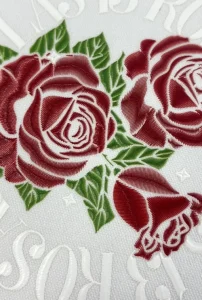

Imagine you run a small apparel business, juggling custom orders while dreaming of scaling up without the headaches of old-school printing. You need machines that deliver sharp designs fast, handle diverse fabrics, and cut down on waste—all without breaking the bank. That’s where cutting-edge digital heat transfer printers come in, transforming how you create everything from vibrant T-shirts to stunning banners.
As you dive deeper, consider partnering with experts who build these tools to fit your workflow. Take Holdwin, for instance—a powerhouse in the industry known for blending reliability with innovation. Their lineup, like the HOLDWIN-1804TX, packs four Epson I3200 printheads for speeds up to 180 square meters per hour at 360×1200 DPI in a single pass. You get piezoelectric inkjet tech with 3.5pl droplets for precision that hits 3600 DPI, all in a durable industrial frame weighing just 550kg. It’s designed for dye sublimation on heat transfer paper up to 1820mm wide, with options for 4, 6, or 8 colors via CISS systems. Plus, an external automatic air/heat dryer and integrated cleaning cap keep things running smoothly in temps from 15°C to 32°C. These aren’t just specs; they’re your ticket to consistent output on polyester fabrics, whether for clothing or decor. Holdwin stands out because their engineers focus on what you face daily: maximizing production while keeping quality tight and costs low. You feel the difference in every print—vibrant, fade-resistant results that wow clients and boost your edge. Ready to upgrade? Their solutions make the switch feel effortless, turning your ideas into reality faster than ever.
This guide breaks down the key types of these printers and why they outshine traditional methods like screen printing. You’ll see how they fit your needs, from small runs to high-volume jobs, and discover picks that deliver real value.
You face choices when picking a digital heat transfer printer, each type tailored to specific fabrics and volumes. Start with the basics: these machines use heat to bond inks onto materials, but their approaches differ. Sublimation leads for polyester work, while others expand to cottons and blends. Let’s explore the main ones, focusing on how they solve your production puzzles.
Picture this: you need bold, full-color graphics on polyester flags or sportswear that won’t crack after washes. Sublimation printers excel here by turning solid dye into gas under heat, infusing it deep into the fabric for seamless, vibrant results.
These printers shine in speed and scale. You load heat transfer paper, print your design, then apply heat to transfer it onto the material. No pre-treatment mess—just clean, efficient runs. Key perks include high-resolution output and minimal ink bleed, perfect for gradients or photos that traditional stencils struggle with.
For a standout option, look at the HOLDWIN-1804TX. It mounts four I3200-A1 printheads, pushing 180㎡/h in one pass at 360×1200 DPI or 120㎡/h at double that resolution. You handle widths up to 1820mm, feeding dye sublimation ink in CMYK or expanded palettes via 4×4, 6×6, or 8×8 CISS setups. The 3.5pl droplets ensure crisp edges, backed by Riprint software that processes JPG, TIFF, or PDF files effortlessly. An automatic moisturizing cap and external dryer (max 7.5kW) prevent clogs, so you print longer without pauses. Weighing 550kg in a compact 3311x1250x1750mm frame, it slots into your space easily, powered by a standard 220V line. Use it for apparel, banners, or canvas bags—you’ll cut setup time and hit deadlines with prints that pop.
This type bridges to others by handling synthetics first, but if your lineup includes cottons, the next option steps up.
You often mix fabrics in your shop—cottons one day, polyesters the next. DTF printers adapt by printing onto a PET film first, then transferring the design with adhesive powder and heat. This versatility lets you tackle diverse jobs without swapping machines.
Expect layered white ink for opacity on dark fabrics, plus fine details that hold up to stretching. You print, cure the powder, and press—simple steps that speed up custom orders like hoodies or totes.
These build on sublimation’s efficiency but add flexibility for non-poly materials. You avoid fabric pre-coats, saving prep time, and get durable bonds that withstand daily wear. Ideal for small batches where you test trends fast.
Now, suppose you specialize in one-off tees or personalized gifts. DTG printers spray water-based inks straight onto the garment, mimicking a desktop setup but scaled for pros.
You pretreat fabrics lightly, print, and heat-cure for a soft feel. This method thrives on natural fibers, delivering photorealistic colors without films or papers.
It flows from DTF by focusing on direct application, cutting intermediaries for quicker proofs. You manage short runs economically, with less waste than bulk traditional presses.
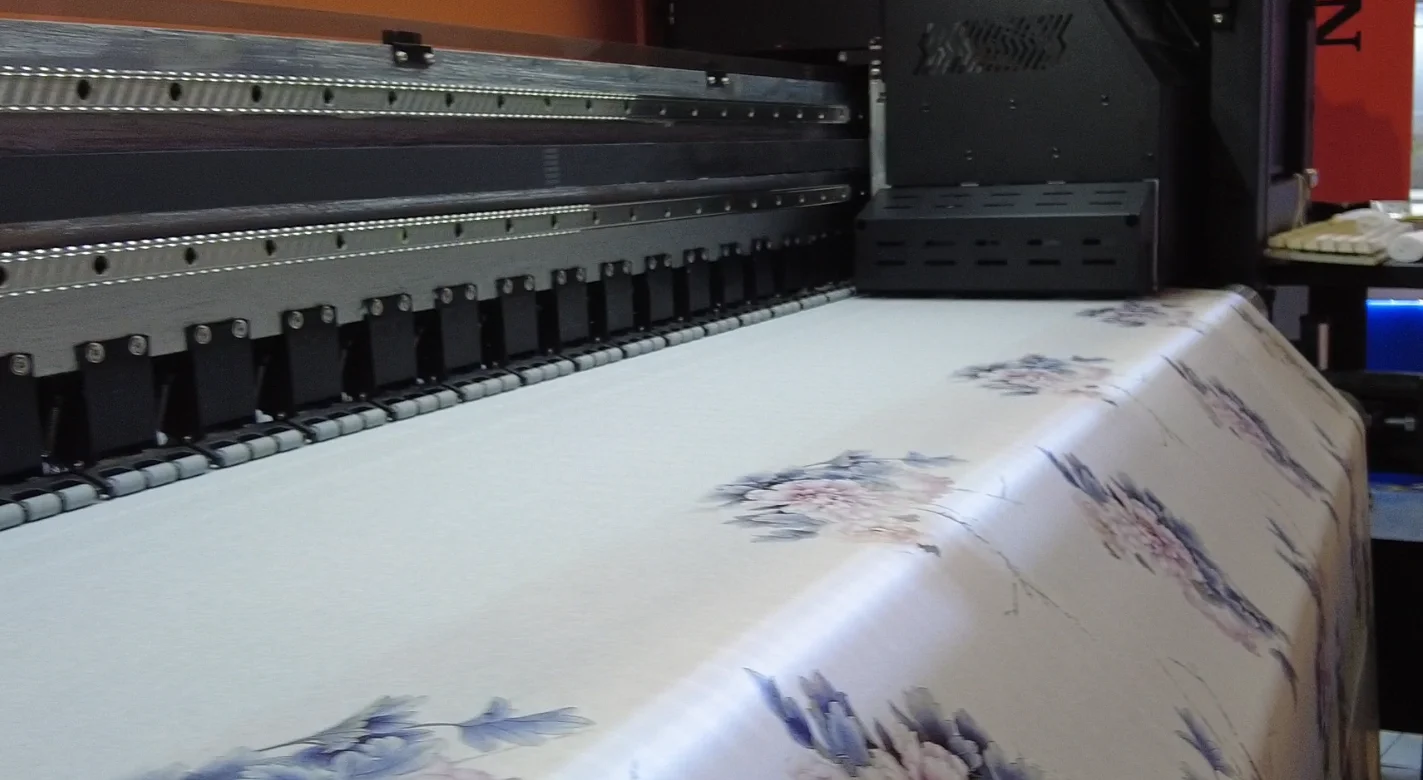
Traditional printing served you well—screens for volume, blocks for basics—but it demands time, space, and skill you might lack. Digital heat transfer flips that script. You gain tools that adapt to your pace, slashing barriers while elevating output. From sharper visuals to greener ops, these edges address your core worries: quality, speed, and bottom line.
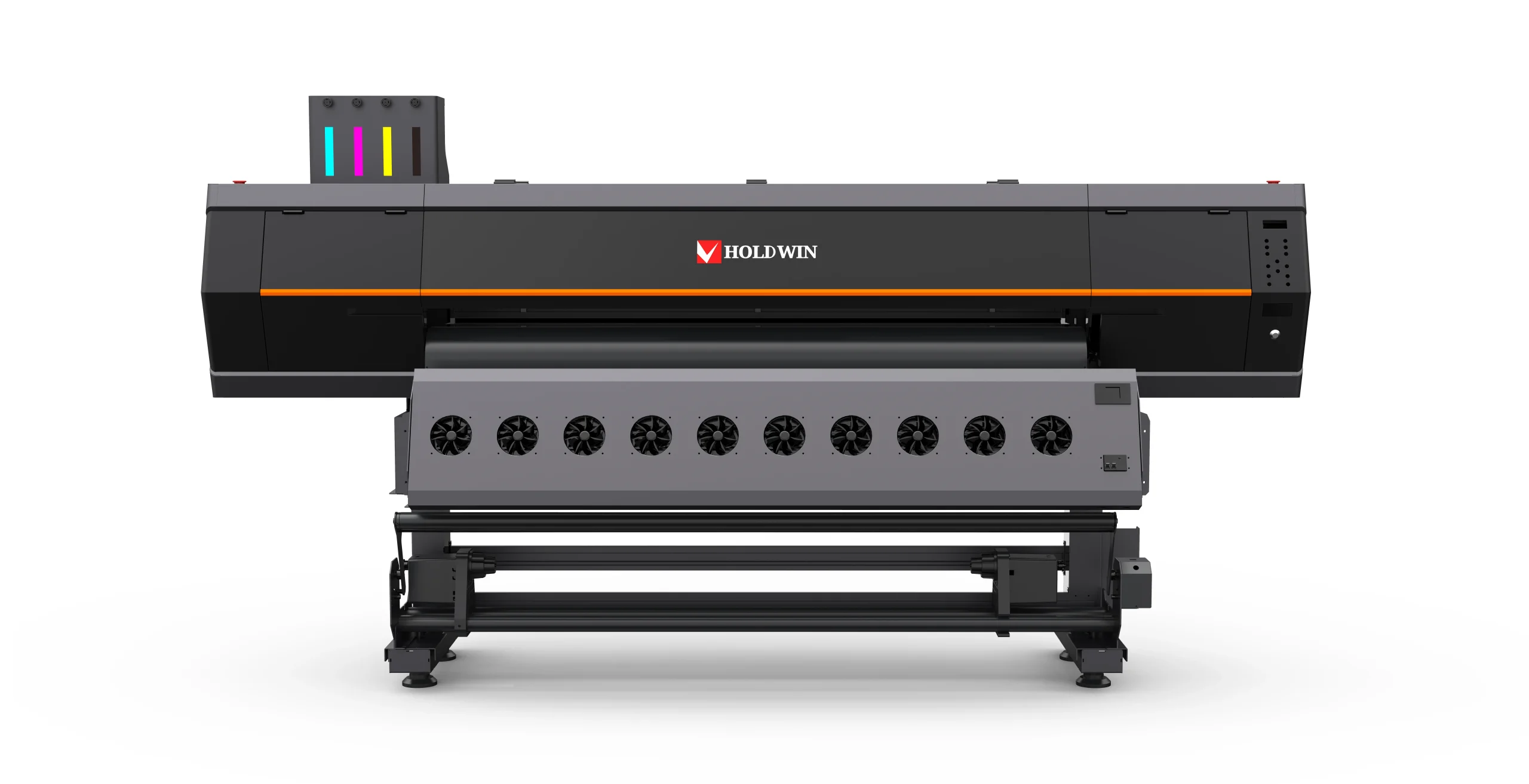
You crave prints that capture every nuance, from subtle shadows to bold logos. Traditional methods limit you with flat colors and coarse lines; digital heat transfer unlocks full-spectrum vibrancy.
These printers layer inks precisely, hitting resolutions like 3600 DPI for edges that stay sharp post-transfer. You experiment freely—complex patterns or photos without extra setups. Take the HOLDWIN-1804TX: its I3200 heads and 3.5pl tech yield photoreal results on transfer paper, transferable to fabrics without distortion. You switch designs in minutes, not hours, fueling creativity for apparel or decor lines.
This quality ties into costs next, as better prints mean happier repeat clients.
Budgets tighten when setups eat profits. Traditional printing ties you to screens per color—expensive for prototypes. Digital shifts that: no plates, low per-run fees.
You print on demand, scaling from one tee to hundreds without waste. Speeds like 180㎡/h mean you fulfill orders faster, freeing cash flow. The HOLDWIN-1804TX exemplifies this with its 1-pass mode, plus a 1500W system that sips power. Optional CISS holds bulk ink affordably, and LAN interface streamlines jobs from your design station. You dodge downtime with auto-clean features, hitting 120㎡/h even at higher res—pure efficiency for growing shops.
Efficiency leads naturally to broader use, easing your daily grind.
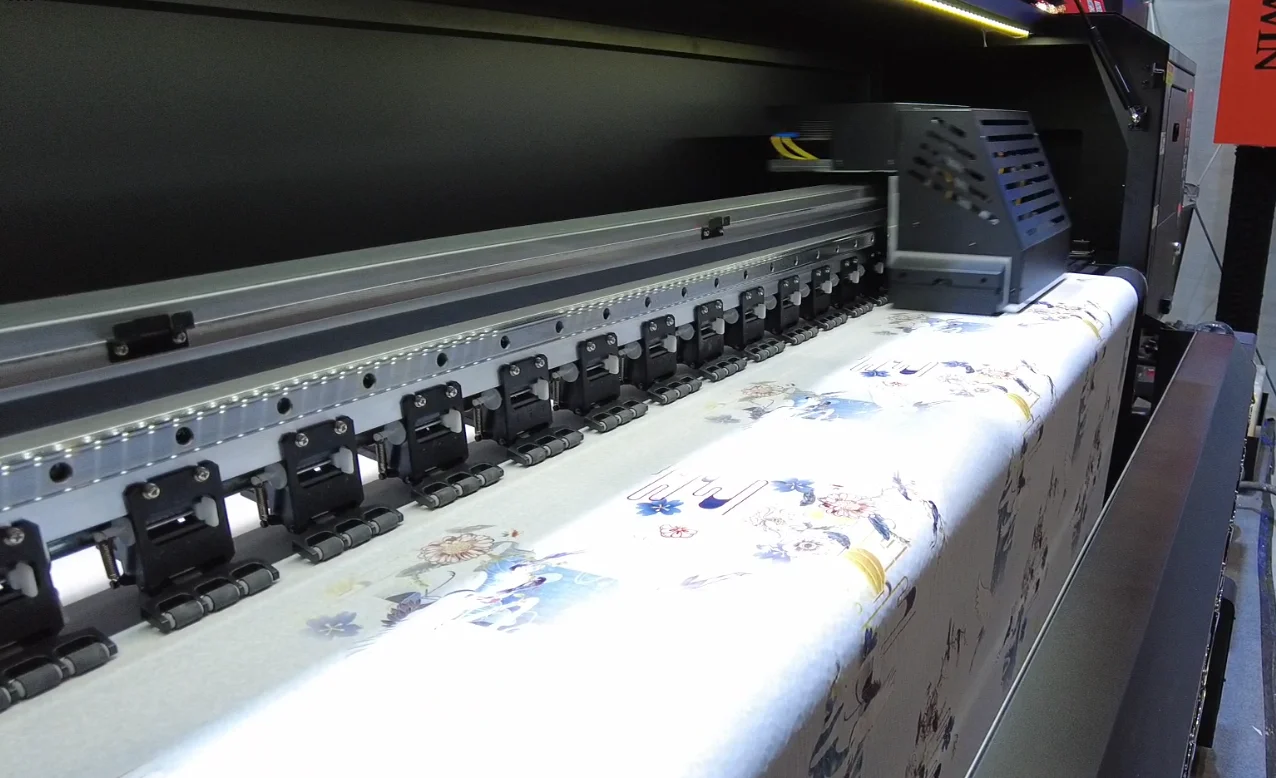
Your projects vary—fabrics shift, volumes fluctuate. Traditional rigidity frustrates; digital embraces change. You handle poly, cotton, or blends with one machine, tweaking settings via intuitive RIP software.
User-friendly panels and quiet fans make onboarding simple. You learn fast, with supports like media clamps and drain bottles included. The HOLDWIN-1804TX fits here: its 1820mm width suits wide rolls, and working humidity of 35-80% suits most shops. You integrate it via USB or LAN, processing files seamlessly—no steep curves.
This adaptability boosts longevity, as prints endure what tradition can’t.
You build brands on lasting impressions. Traditional inks fade or peel; digital bonds deeper for wash-fast colors. You get 50+ cycles without dulling, ideal for activewear.
Eco-wise, water-based or dye formulas cut VOCs versus solvents. Less waste from digital proofs means greener ops. With the HOLDWIN-1804TX’s stable temp control (15-32°C powered), you ensure even transfers that hold up. Package it at 620kg for safe moves, and you invest in gear that outlasts trends.
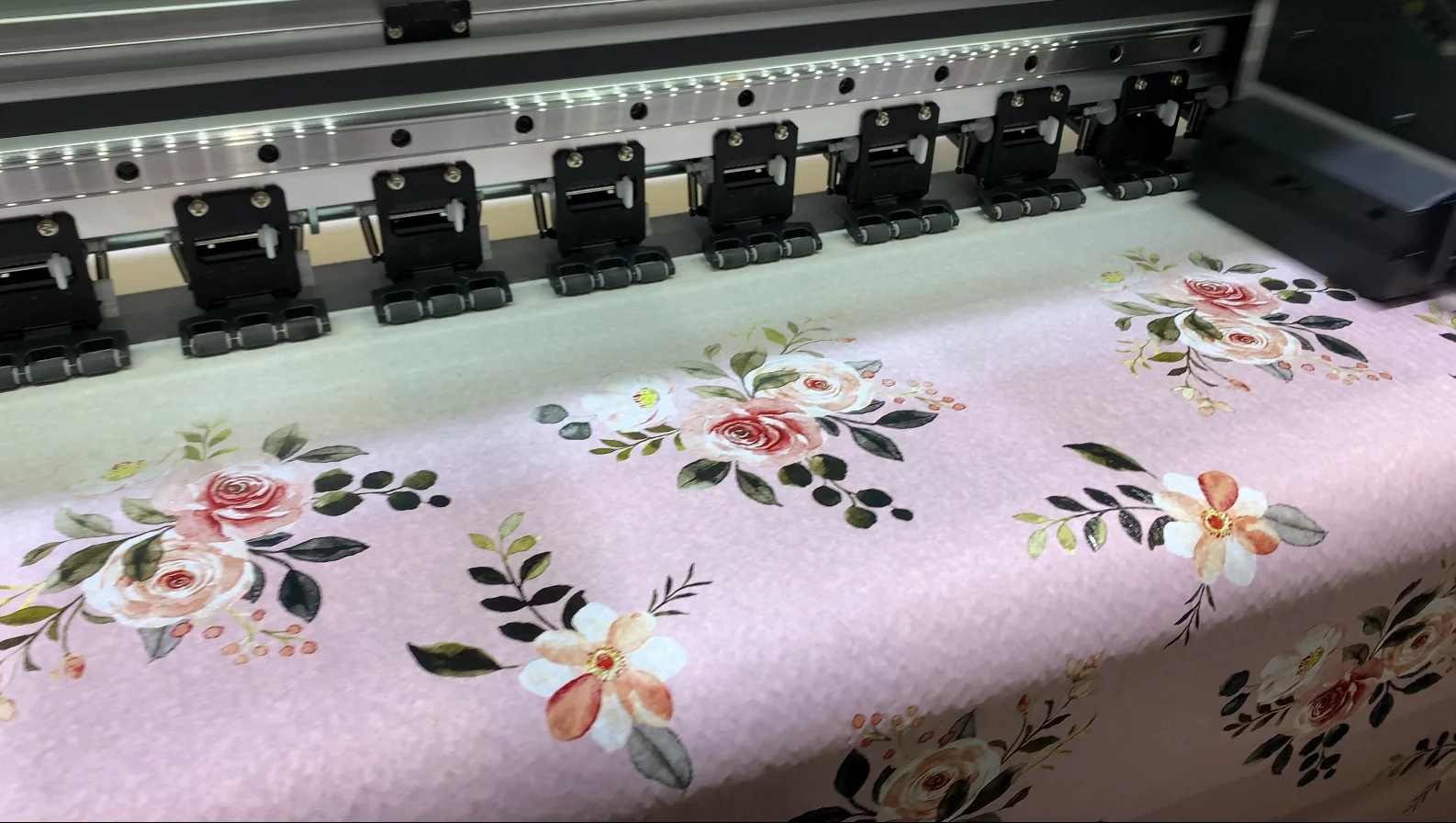
You’ve weighed types and perks—now picture them in your space. Opt for gear from innovators who prioritize your wins: stable builds for nonstop runs, quality checks baked in, and cost controls that scale with you.
The HOLDWIN-1804TX shines as a flagship for sublimation. You leverage its four-head config for reliable 360×2400 DPI output, external dryer for instant dries, and Riprint for versatile formats. It tackles clothing, home textiles, or gadgets, setting your work apart with pro-level precision. From entry models to beasts like this, the focus stays on easing your path—fewer headaches, more masterpieces.
Explore options that match your volume, and watch production soar.
Digital heat transfer printers redefine your craft, offering types like sublimation, DTF, and DTG that deliver speed, versatility, and eco smarts over rigid traditions. You gain vivid, durable prints that fit any job, powered by tools like the HOLDWIN-1804TX for real-world reliability.
Ready to transform? Our team provides tailored advice, demos, and setup help. Contact us today—let’s craft your success story.
Q: How fast can the HOLDWIN-1804TX print for high-volume jobs?
A: It reaches 180 square meters per hour in a single pass at 360×1200 DPI, dropping to 120 square meters per hour for finer 360×2400 DPI detail—ideal for keeping your production line moving.
Q: What fabrics work best with these digital heat transfer printers?
A: Sublimation types excel on polyesters for apparel and banners, while DTF and DTG handle cottons and blends too, giving you options for diverse projects like tees, bags, or decor.
Q: Do I need special training to operate a machine like the HOLDWIN-1804TX? A: No—its intuitive RIP software, auto-cleaning, and simple interface make it accessible for beginners, with standard components like manuals and USB cables to get you started quickly.
